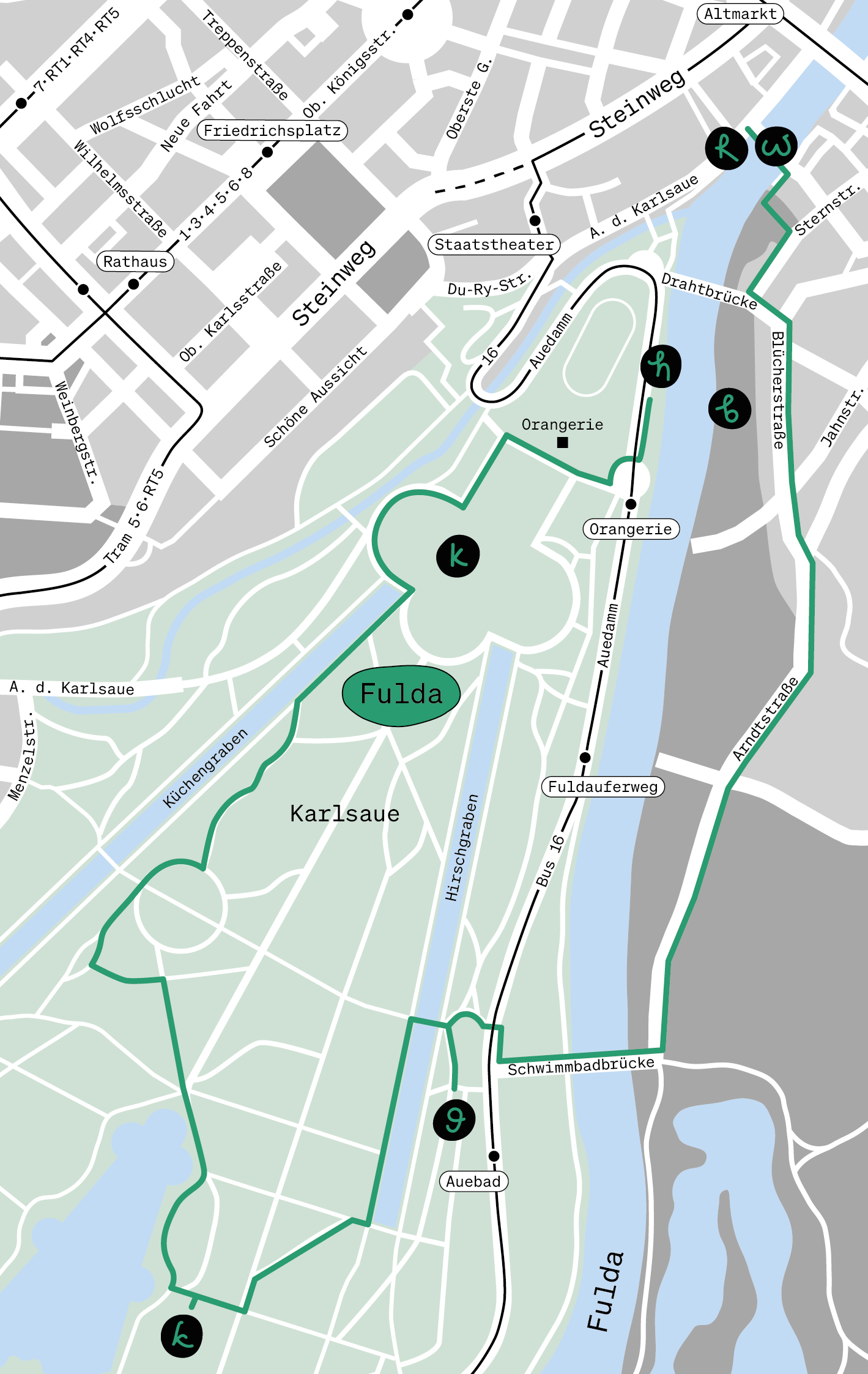Stop 1: Rondell
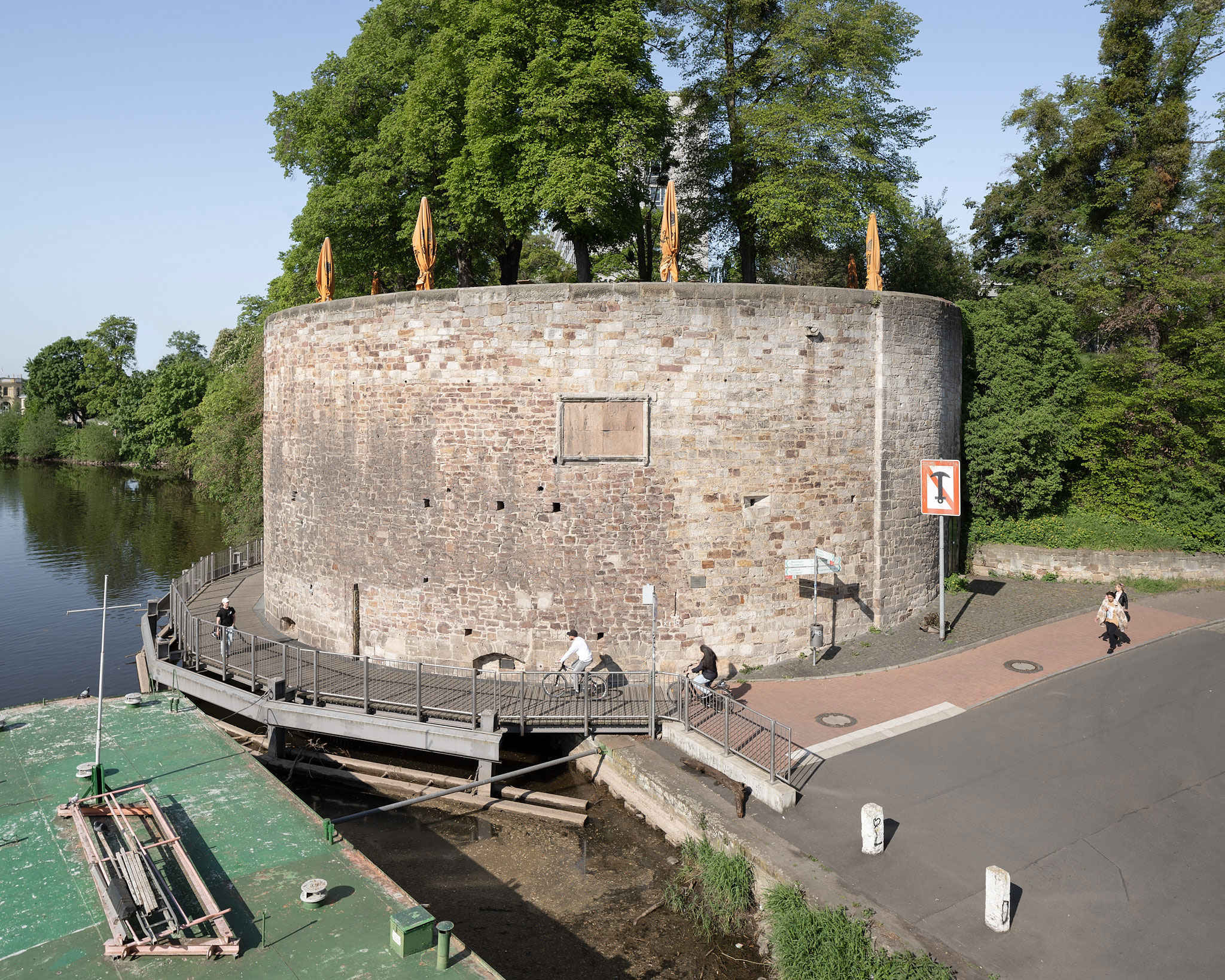
Rondell, exterior view, Kassel, 2022, Photo: Nicolas Wefers
Built in 1523 in Unterneustadt on the Fulda the Rondell was a defensive tower that formed part of the old fortifications of the City of Cassel. Landgrave Friedrich II had the largest parts of it removed in the 18th century. The walls of the Rondell are nearly 10 meters thick. The 15-meter-high domed area can only be accessed via a “floating” metal footbridge. Since the year 2000, there has been a beer garden on the Rondell while the interior serves as an exhibition venue for documenta fifteen.
Here the Hanoi-based filmmaker and artist Nguyen Trinh Thi devotes herself to the multi-layered relationships between image, sound, and space. Her project is based on an autobiographical novel that describes conditions in detention camps. The artist shows scenes of prisoners walking through the camp, harvesting and eating chili peppers. Here she uses sounds combining tonal images with memories, landscapes, and stories.
Exhibiting lumbung artists:
Route: To the left of the Rondell is the Walter Lübcke Bridge, named last year after the Kassel district president who was assassinated by a right-wing extremist in 2019.
Stop 2: Walter-Lübcke-Brücke
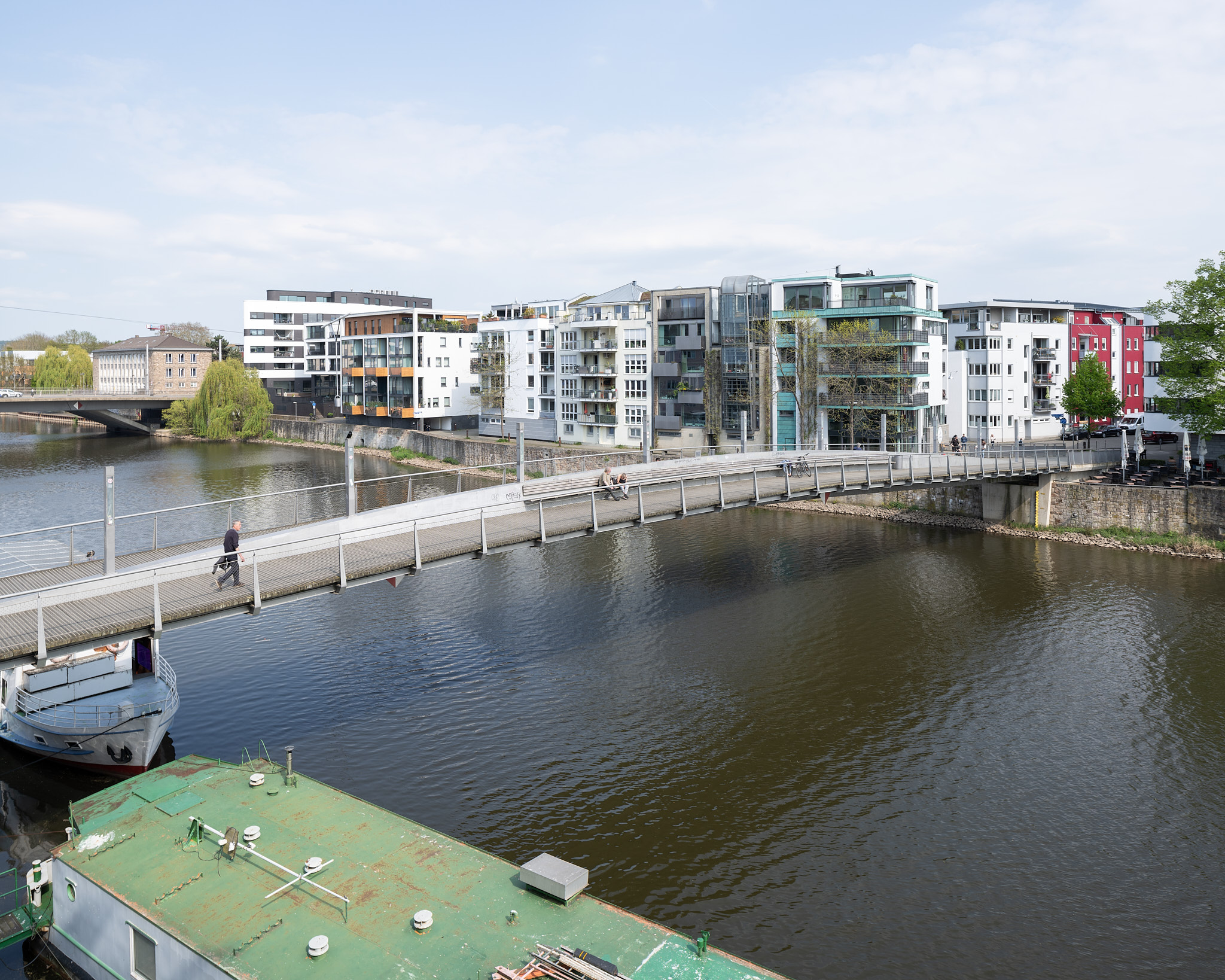
Walter-Lübcke-Brücke, Kassel, 2022, Photo: Nicolas Wefers
This bridge for pedestrians and cyclists, which connects the districts of Mitte and Unterneustadt, was renamed only about a year ago after Walter Lübcke, the district president of Kassel, who was murdered by right-wing extremists in 2019. In renaming the bridge, the city was also responding to the controversy around the Nazi past of its former mayor, Karl Branner, after whom the structure was named in 2000.
Incidentally, in addition to the current documenta fifteen artworks, a light sculpture, Blue Dancer by Japanese artist Kazuo Katase, can also be seen from the bridge – one that is often mistakenly referred to as a past documenta artwork, as it was installed concurrently with documenta 11 in 2002.
Exhibiting lumbung artists:
Route: Cross the bridge and turn right into Elisabeth-Selbert-Promenade and follow the road. At the end turn right into Sternstraße.
Tip: On the left is Kollektiv Café Kurbad, which serves drinks, cakes and light meals and is home to the unique bathing museum Bad-Museum. Old bathtub models and the history of Kassel’s bathing scene are on display here. On the terrace of Kollektiv Café Kurbad overlooking the Hiroshima-Ufer, Claes Oldenburg’s documenta 7 pickaxe sculpture can be spotted. The Hiroshima-Ufer is another documenta fifteen exhibition venue, where exhibits of the ZK/U – Center for Art and Urbanism can be seen.
Accessibility: The route to Kollektiv Café Kurbad features grass and light gravel. The interior is not accessible at ground level.
Route: After the café, continue on Sternstraße (do not cross the bridge) and at the small intersection head left into Blücherstraße. After a few meters on the right-hand side is the boat rental Bootsverleih Ahoi.
Stop 3: Bootsverleih Ahoi
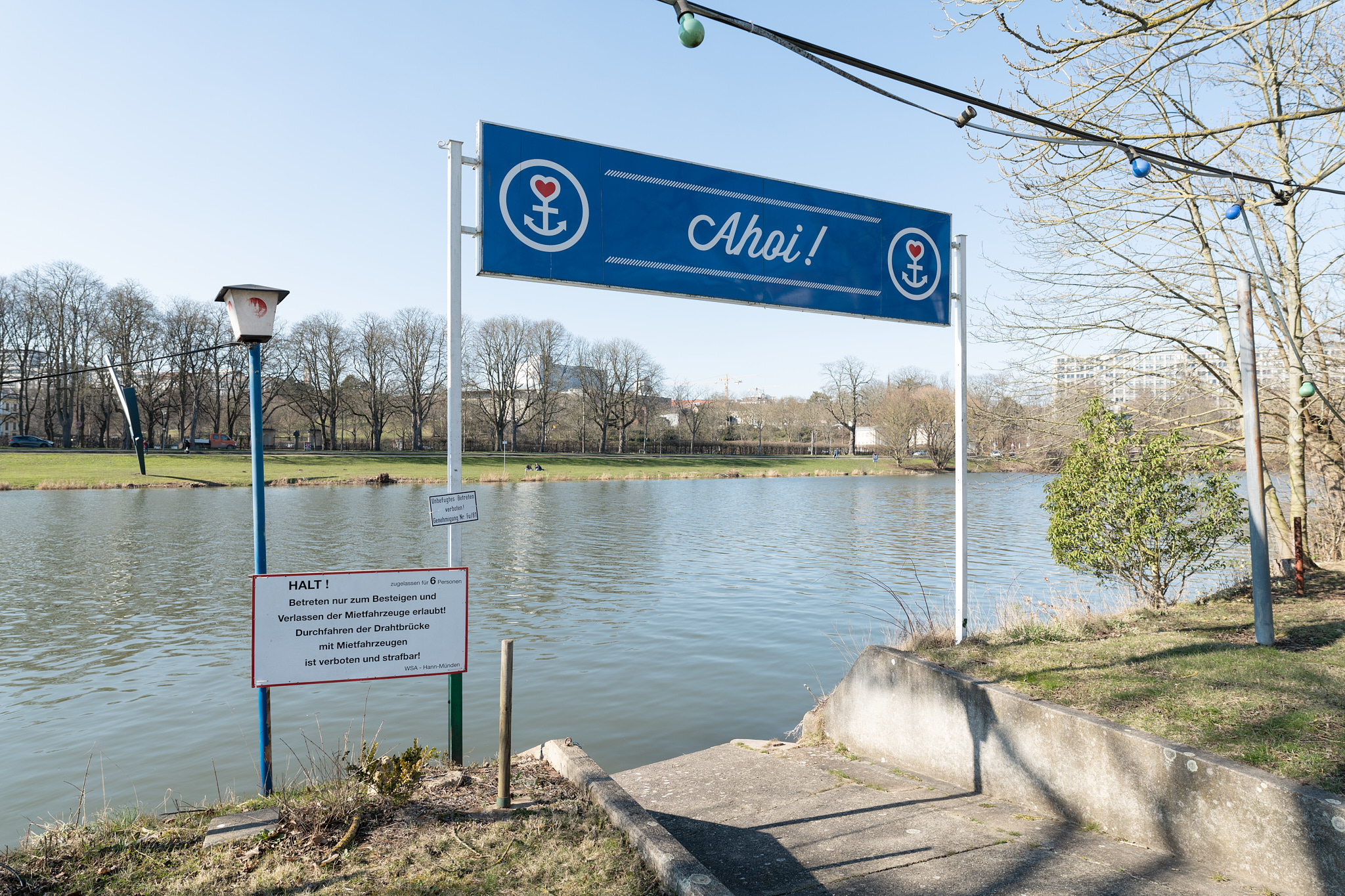
Bootsverleih Ahoi, Kassel, 2022, Photo: Nicolas Wefers
In 1950, Theo Kissler founded a boathouse on the banks of the Fulda River. After many changes, since 2015, the Bootsverleih Ahoi has been a meeting place for anyone wanting a river excursion. The Fulda is included in the works as well as the waiting room of the boat rental.
Exhibiting lumbung artists:
Service Points: Food and beverage service
Route: Continue along Blücherstraße until you fork left into Arndtstraße, which leads into what is clearly a more rural setting. Right at the beginning on the right-hand side, the path passes the Fuldaaue plant nursery, part of ruangrupa’s Kassel ecosistem. It is definitely worth taking a detour here to pick-your-own or purchase some of their fresh, local produce.
The road, reminiscent of a country lane lined with fields on the left and meadows on the right, leads to a small intersection and a nearby bridge. The left turning would take you to the Bugasee area and over the bridge the route now continues to the opposite bank of the Fulda River.
Tip for swimming: Before crossing the bridge to the other side, it is worth taking a detour to swim on the banks of the Fulda. In summer, bathing enthusiasts meet here.
On the opposite bank of the Fulda, after crossing the bridge, you feel a bit more back in the city again. Cross the street “Am Auedamm” to get to the Karlsaue Park.
Accessibility: The ground here is gravel.
Route: In the park, keep left and turn into a narrow path that leads to the Greenhouse.
Stop 4: Greenhouse (Karlsaue)
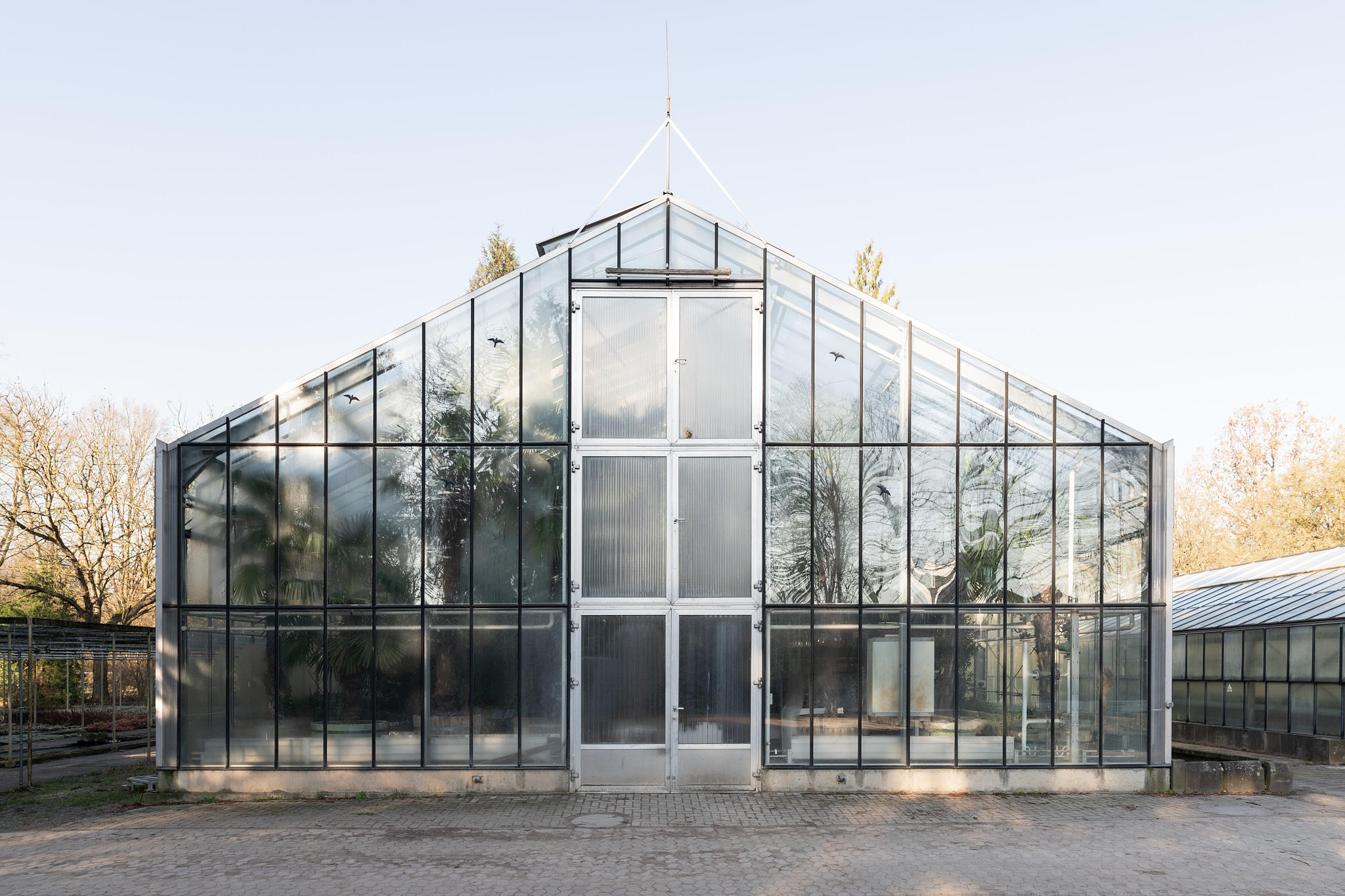
Greenhouse (Karlsaue), Kassel, 2022, Photo: Nicolas Wefers
Climate change and other environmental issues now preoccupy us across disciplines in many places around the world. Más Arte Más Acción (MAMA) brings together artists, scientists, activists and writers on the Pacific coast of Colombia to address these topics. In Kassel, MAMA also explores environmental issues and presents a multimedia installation in the Greenhouse on the park’s management depot featuring elements such as a sound collage, tree trunks as well as salvaged wood from the forestry body HessenForst.
Stop 5: Compost Heap (Karlsaue)
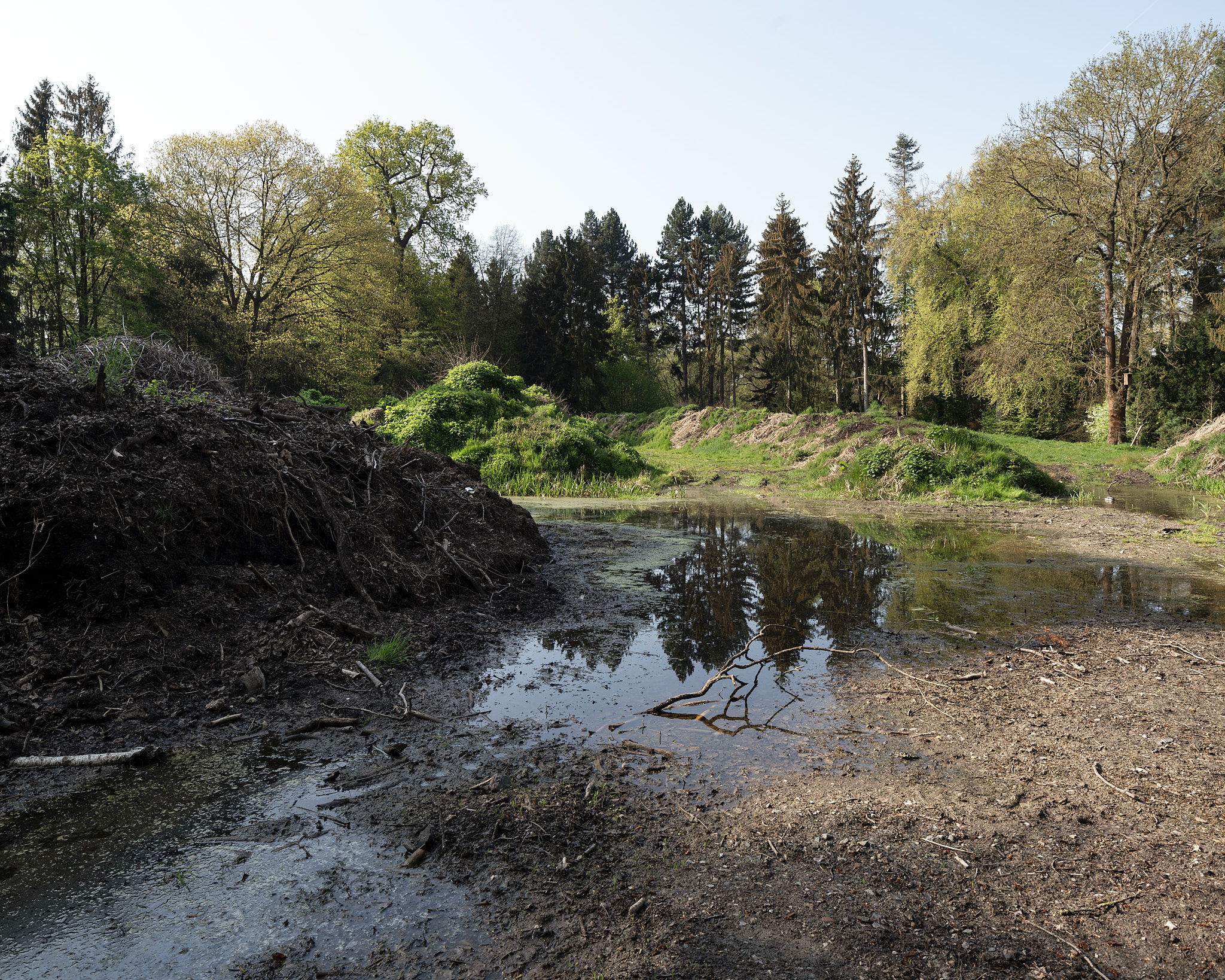
Compost heap (Karlsaue), Kassel, 2022, Photo: Nicolas Wefers
Also located near the Karlsaue Greenhouse is a Compost Heap, or rather a salvaged wood depot, which is used by the landscape gardeners at Museumslandschaft Hessen Kassel.
Exhibiting lumbung artists:
Accessibility: The ground here is gravel.
Route: Continue to the right along the canal towards the yellow Orangerie until you reach the large Karlswiese, which extends directly in front of it and where other artworks by documenta fifteen lumbung members and artists are featured.
Stop 6: Karlswiese (Karlsaue)
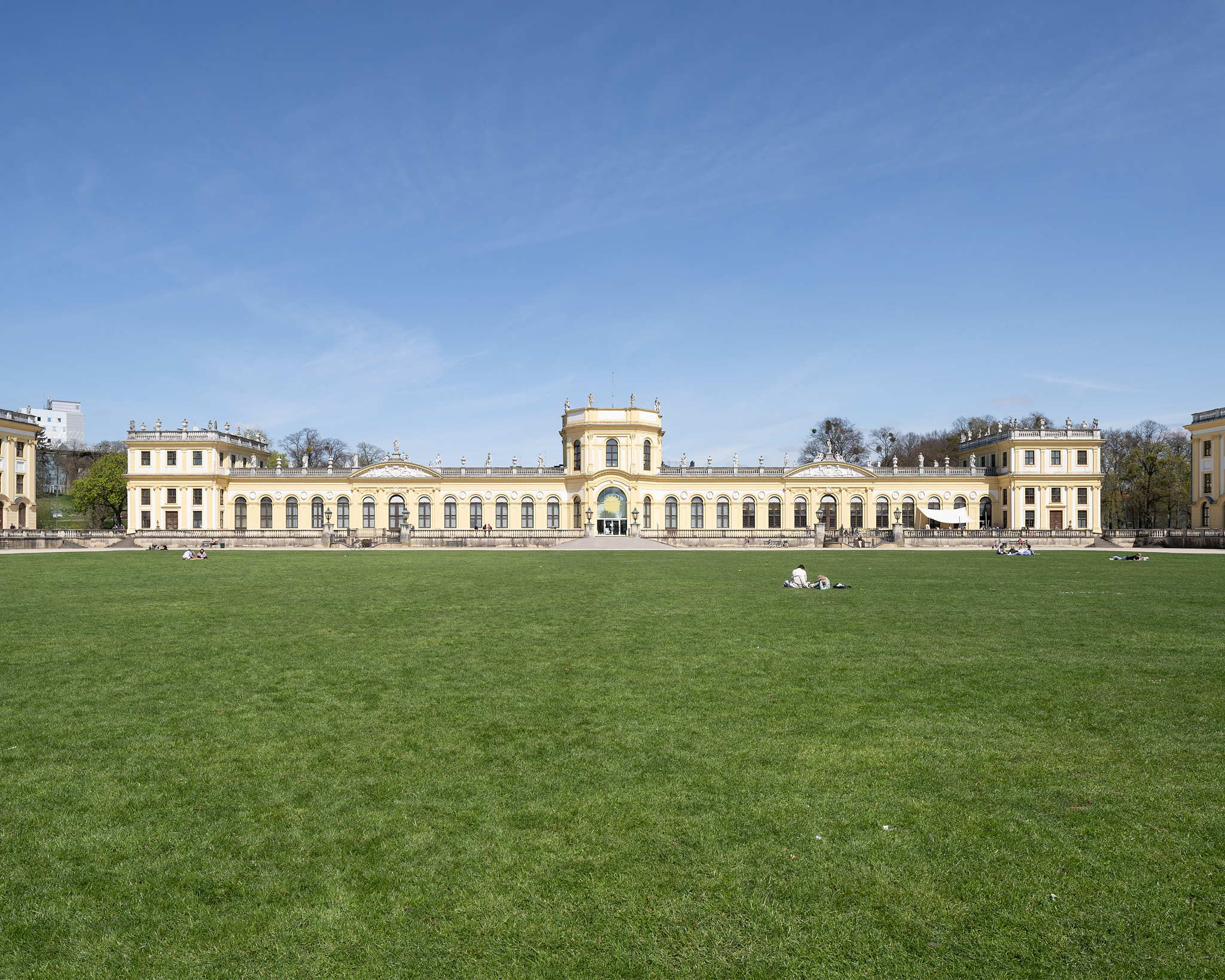
Karlswiese (Karlsaue), Kassel, 2022, Photo: Nicolas Wefers
The baroque Auepark, named after its patron Landgrave Karl von Hessen-Kassel, has been a key exhibition site for documenta for many years now. In 1955, it was also the site of that Bundesgartenschau, during which Arnold Bode conceived his first documenta.
Exhibiting lumbung artists:
Route: To the right of the Orangerie, go back to the Auedam to the Hiroshima-Ufer (Karlsaue Park), where the ZK/U – Center for Art and Urbanism present their exhibits. From here take Bus 16 (“Orangerie” stop) back into the city center.
Stop 7: Hiroshima-Ufer (Karlsaue)
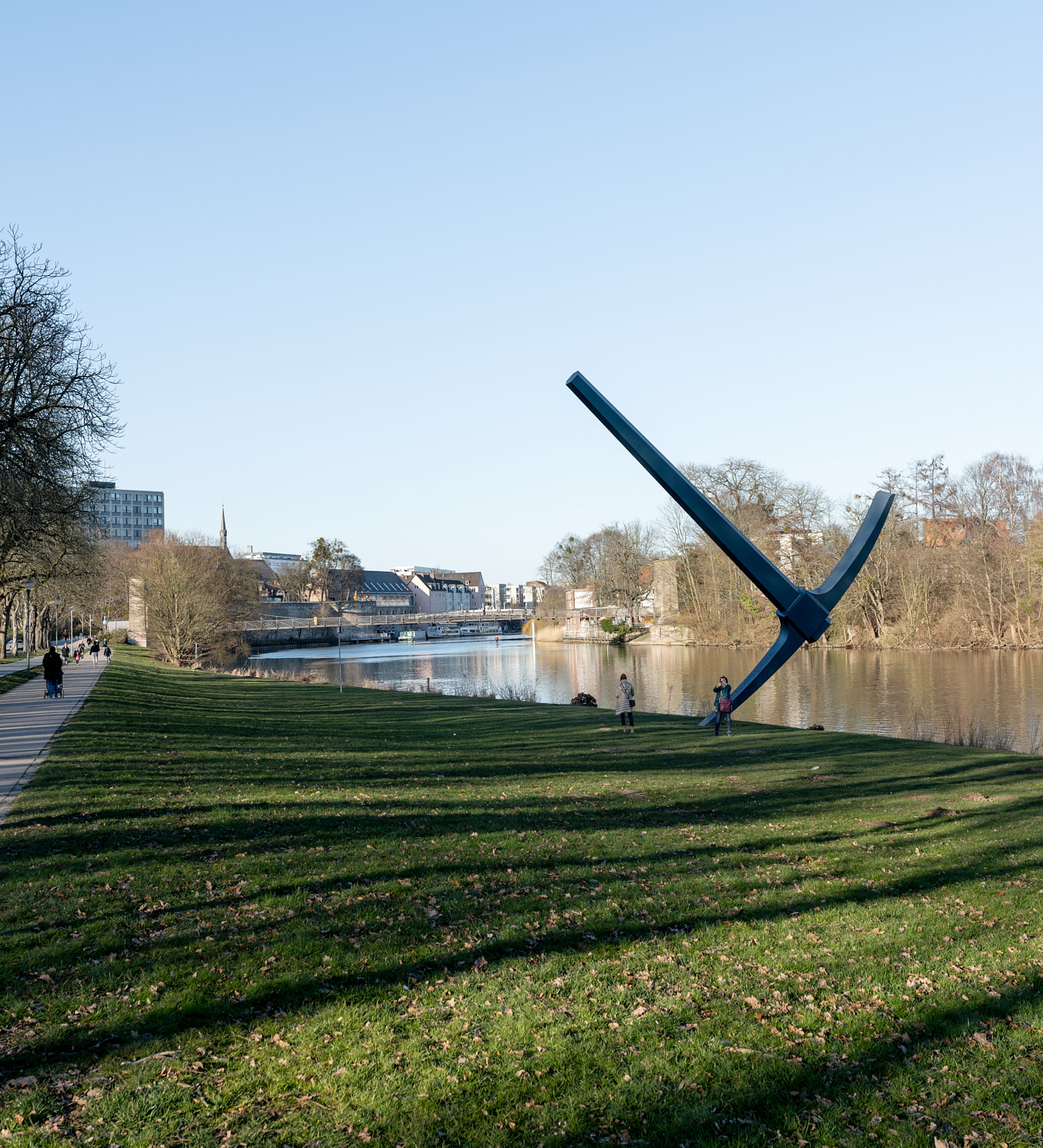
Hiroshima-Ufer (Karlsaue), Kassel, 2022, Photo: Nicolas Wefers
August 6, 2022 marks the 77th anniversary of the atomic bombing of the Japanese city of Hiroshima. Because this day is traditionally commemorated on the banks of the Fulda River, the part of the shore where Claes Oldenburg’s striking steel pickaxe sculpture Spitzhacke stands was renamed Hiroshima-Ufer or Hiroshima Shore a few years ago.
Exhibiting lumbung artists:
Tip: Not far from the Hiroshima-Ufer, the Kulturzelt Kassel is located directly at the Drahtbrücke. The Kulturzelt offers a diverse musical program with artists from soul, jazz, indie, pop or punk and folk. documenta fifteen ticket holders receive a 10% discount on all Kulturzelt tickets (with the exception of corporate events) for the duration of the exhibition.
Route back into the city center: The long walk is now drawing to a close. Passing the Orangerie on the left and heading up towards documenta Halle, you will reach Friedrichsplatz in about 5 minutes (not barrier-free, partly cobblestone).
